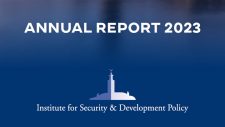Navigating Uncertainty: How Multinationals Can Hedge Against Rising Tensions in the Taiwan Straits

Brian Iselin
When geopolitical tensions in critical regions can reshape the landscape of global trade overnight, multinationals are finding it increasingly necessary to adopt sophisticated risk management strategies. The Taiwan Straits, a vital hub for the tech manufacturing industry, exemplifies such a region where rising tensions demand a proactive approach to safeguard operations, supply chains, and financial stability. This article delves into the comprehensive strategies that multinational corporations, particularly those in tech manufacturing, should implement to navigate the complexities of operating amidst the volatility in the Taiwan Straits.
The Strategic Imperative
The Taiwan Straits region is not just a geopolitical flashpoint; it’s also a linchpin in the global supply chain for technology and consumer goods. With a significant portion of the world’s semiconductor production based in Taiwan, any disruption can have far-reaching consequences for multinationals worldwide. It’s imperative for these corporations to develop a multifaceted strategy that addresses the various dimensions of risk associated with regional instability—from operational disruptions to financial volatility.
Diversifying Away from Danger
Geographical diversification stands out as the first line of defence. By spreading investments and operations across multiple regions, companies can significantly mitigate the impact of any regional instability. This entails identifying and establishing alternative manufacturing hubs, which not only involves logistical planning but also forging partnerships with local governments and businesses to facilitate a smooth transition. Southeast Asia, with its burgeoning tech manufacturing capabilities, along with North America and Europe, offers promising alternatives.
Building Supply Chain Resilience
The supply chain is the lifeline of the tech manufacturing industry. Ensuring its resilience means having a flexible and robust network that can adapt to sudden shocks. This includes conducting vulnerability assessments to identify potential points of failure and developing a multi-sourcing strategy for critical components. Increasing stockpiles of essential materials can serve as a buffer, ensuring that short-term disruptions do not turn into long-term setbacks.
Financial Risk Management
Currency and commodity price volatility can erode profit margins and disrupt financial planning. Forward contracts, options, and other financial hedging instruments are essential tools in the financial risk management arsenal. These tools can lock in prices and exchange rates, protecting against the unforeseen. Additionally, establishing a contingency fund can provide a financial cushion that enables the company to navigate through turbulent times without compromising its strategic initiatives.
Engaging in Political and Regulatory Dialogues
Understanding and navigating the political and regulatory environment is crucial for maintaining operations in any region. Engaging with policymakers and staying abreast of regulatory changes can provide early warnings of potential disruptions. Advocacy efforts can also influence policy decisions, ensuring a more favourable operating environment for the company.
Embracing Technology and Innovation
Technological advancements offer a pathway to reducing dependencies on volatile regions. Automation and artificial intelligence can decrease the need for labour and make manufacturing processes more flexible, allowing for a quicker response to changing conditions. Moreover, investing in research and development can uncover new materials and processes that mitigate the impact of regional supply chain disruptions.
Crisis Preparedness and Response
Despite all precautions, crises can and do occur. Having a comprehensive crisis management plan in place, which includes detailed response strategies for specific scenarios like geopolitical tensions in the Taiwan Straits, is essential. Regular drills and a dedicated task force can ensure the organization is always prepared to act swiftly and effectively.
Implementation: A Phased Approach
Adopting such a comprehensive strategy is not an overnight task. It requires a phased approach, starting with immediate measures to mitigate the most pressing risks, followed by medium- to long-term initiatives aimed at building a more resilient and flexible operation. Continuous monitoring and adjustment ensure that the strategy remains relevant as the situation evolves.
Conclusion
The rising tensions in the Taiwan Straits serve as a clarion call for multinationals to reassess and fortify their risk management strategies. Through geographical diversification, supply chain optimization, financial risk management, political engagement, technological innovation, and crisis preparedness, companies can navigate the uncertainties of our times. Such a strategic approach not only ensures business continuity in the face of geopolitical tensions but also secures a competitive advantage in the ever-evolving landscape of global trade.
In crafting this road map for resilience, the aim is to provide a blueprint that can be adapted and applied across industries and regions. As the global economy becomes increasingly interconnected and volatile, the ability to anticipate, adapt, and act decisively will define the success of multinational corporations in the 21st century.
Related Publications
-
The US and EU, and the Emerging Supply Chain Network: Politics, Prospects, and Allies
The Global Supply Chains have evolved from simply logistical achievements to being the bedrock of the global economy. Driven by technological advances and geopolitical shifts, this transformation underscores the critical […]
-
The Political Gambit in Sports: Taiwan’s Struggles and Opportunities
In the Paris 2024 Olympics, the Taiwanese government is being given the opportunity to use ‘Taiwan’ as its name in the Cultural Olympiad. Taking part in international sports is viewed […]
-
Hegemony at a Crossroads: The Inverse Dynamics of China’s Global Strategy
Here is my bold statement. Hard power projection decimates soft power but only for authoritarian states. In the early 21st century, I was living in Beijing and at that time […]
-
Taiwan’s Energy Transition: Opportunities for Collaboration with Sweden and the EU
Taiwan has a moment now to define its future energy development. As an island nation with limited natural resources, Taiwan has historically relied heavily on imported energy sources, a practice […]
-
ISDP Annual Report 2023
ISDP’s Annual Report for the year 2023. We look back on 2023, a year in which tensions and conflicts captured the strategic space in ISDP’s focus areas, making headlines around […]




